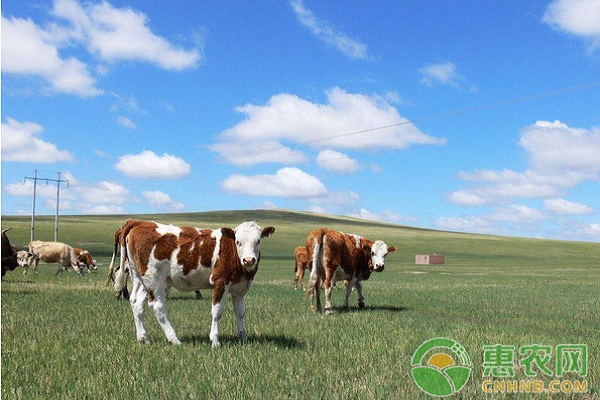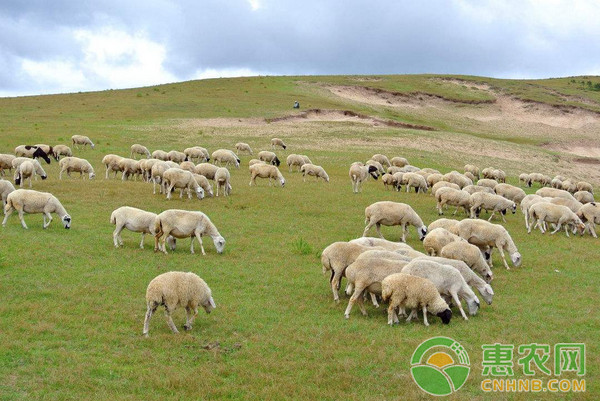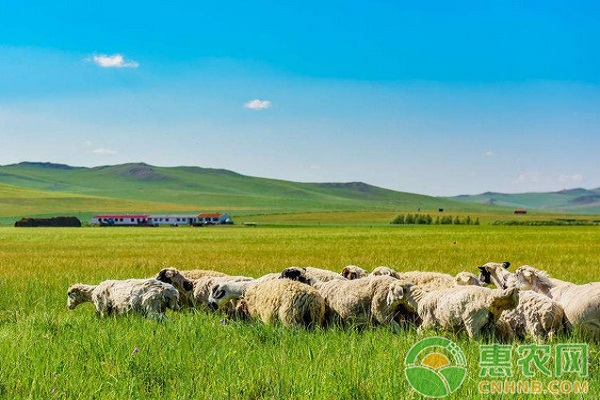The foot and mouth disease of cattle and sheep is the focus of epidemic prevention management in animal husbandry. The disease is not only rapid onset, but also spreads quickly. It is difficult to control and easy to relapse. Once a large area spread, it will not only affect the development of livestock, but also the safety of food. Caused serious economic losses.

First, the occurrence of foot and mouth disease in cattle and sheep
Foot-and-mouth disease has a high probability of occurrence in cloven-hoofed animals such as cattle and sheep, and is a common and highly contagious epidemic disease. Pathologically, the pathogen of foot-and-mouth disease generally resides in the feces of animals, causing disease and infection due to poor daily management and unqualified hygiene management. Usually, the symptoms of sick cows and diseased sheep are severe in the early stage of the disease, and they will continue to be ill for several months. The toxicity is strong and it is difficult to cure. Even in the case of complete recovery, sick cows and sick sheep still carry pathogens for several months. And there is a risk of recurrence. Therefore, in order to ensure the outbreak, infection, recurrence and other problems of foot-and-mouth disease, the first thing to do is to prevent the disease. The respiratory tract of cattle and sheep, the digestive tract and damaged skin and mucous membranes may become the gateway to virus parasitism and infection. Once the disease occurs, the related products of these livestock, such as meat, milk, fur, etc., will carry the virus. Even if the secretions and excretions are improperly handled during transportation, the air, feed, water source and transportation tools will be polluted, thus becoming a virus. Communication provides a convenient way. In general, due to the breeding of bacteria and good infection conditions in spring and winter, the probability of foot-and-mouth disease is high, but it is not ruled out that it may occur all year round.
The symptoms of foot and mouth disease in cattle and sheep are different. The virus damage and treatment are also closely related to the type of cattle and sheep and the immune system. But in general, the foot and mouth disease of cattle and sheep still have some typical symptoms in the process of onset. The so-called foot-and-mouth disease, the main disease area is the mouth and hoof of cattle and sheep, and also appears in the breast area for lactating cattle and sheep. After the onset, blisters of varying sizes may appear in the mouth, hooves, and breasts of sick and sick sheep. When the condition is serious, the blisters will continue to expand and form blood spots, and even infect the respiratory tract, lungs, and stomach. The diseased cattle and sheep are mainly characterized by decreased appetite and mental dysfunction. The animals in lactation show a decrease in milk volume, while cows, ewes and newborn young animals are also cross-infected through breast-feeding. Adult animals are generally more resistant and can be effectively treated under drug control, but the immune system of young animals is fragile. Once the disease is detected, blister rupture, bacterial infection, oral ulcers, and even infection may occur if effective control is not obtained. Respiratory tract, digestive tract, causing symptoms such as blood enteritis and myocardial paralysis, increasing the probability of death.

Second, the differential diagnosis of foot and mouth disease of cattle and sheep
Early identification, early diagnosis and early isolation are important measures to avoid the occurrence and spread of foot and mouth disease. In daily management, farmers should master the basic symptoms of foot-and-mouth disease and conduct regular inspections. For uncertain disease symptoms, you can contact a specialized agency to sample the blisters or blister fluids of sick cows, sick sheep's mouth and hooves. To carry out a poisonous type, and finally identify and confirm the diagnosis.
In the process of daily diagnosis, farmers usually confuse foot-and-mouth disease with stomatitis. Generally speaking, the area of ​​stomatitis is mainly concentrated in the mouth and nostrils. In the early stage of the disease, there will be short-term fever symptoms and no formation. In the case of a lesion, it will gradually heal and will not infect the internal organs. However, foot-and-mouth disease can detect lesions in the mouth, nose, and hoof of sick cattle and sick sheep, and the toxicity is diverse. The initial stage is mainly blisters. In severe cases, the rupture of the blisters may cause ulceration, and even affect the throat, organs, and gastric mucosa. Wait for the organ function. Therefore, in the daily management, the farmers should correctly distinguish the common diseases, and only after the diagnosis is made, can the effective prevention and treatment plan be formulated.
Third, the prevention and treatment of foot and mouth disease of cattle and sheep
"Preventing problems before they occur" is the basic principle for the prevention of foot-and-mouth disease in cattle and sheep. Because of the strong contagious nature of foot-and-mouth disease, it is an important means to reduce the probability of morbidity and reduce the loss of farmers.

In the process of prevention of foot-and-mouth disease in cattle and sheep, farmers should start from the following points: First, vaccination, although there are more toxic types of foot-and-mouth disease, there is no specific vaccine that can absolutely guarantee the control of the disease, but According to several viruses that have been developed to induce foot-and-mouth disease, farmers should be strictly vaccinated according to the disease prevention program to reduce the probability of occurrence. For example, inactivated vaccines on the market and high serum-free serum are good choices for vaccination; Second, to strengthen health management, the occurrence of foot-and-mouth disease in cattle and sheep is closely related to the hygienic conditions of the growing environment. In daily management, farmers should not only promptly remove feces, corrupted grass, feed residue and other hotbeds that can breed viruses, but also should use strong Disinfection, ammonia water dosing, etc. for disinfection, control the virus in the germination stage; Third, accurate diagnosis, the previous diagnosis of the foot and mouth disease of cattle and sheep has been briefly discussed, farmers should be regularly checked in daily management, The diseased cows and sick sheep with pre-symptoms will be isolated in time, and the whole house will be disinfected. Unvaccinated cattle and sheep for immune management to improve the spread of disease; Fourth, the health management of the farmers, to avoid random access to the barn, to control the possibility of human transmission; Fifth, in the livestock trade process Strict quarantine should be done, and the control of breeding stocks, livestock products, feeds, etc. in countries and regions where foot-and-mouth disease is rampant should be strengthened, and emergency immunization should be injected for animal stocks that may be threatened to control the spread of the epidemic.
Disease prevention is an important part of epidemic control, and the treatment of diseases is also a necessary means to control the mortality of cattle and sheep and reduce the economic losses of farmers. After the incidence of foot and mouth disease in cattle and sheep, farmers, especially some large-scale farms, should cooperate with relevant professional institutions to treat diseases. First of all, the report on the incidence of foot-and-mouth disease, foot-and-mouth disease as a pandemic disease, the probability of its occurrence in infection is extremely high, therefore, the farmer once found that the early signs of the disease should be reported in a timely manner, pre-treatment of the animals with the disease, to avoid The spread and spread of the disease, for the follow-up treatment to fight for time; Secondly, during the isolation treatment of diseased cattle and sick sheep, the farmer should apply the blister area on the one hand, for example, in the mouth of the sick cow, sick sheep, breast After the affected area is cleaned, it can be applied with 0.1% potassium permanganate solution. For the affected part of the hoof, you can use 3% of the Suer solution to clean and apply the fish stone fat ointment. On the other hand, you should also do the nutrient supply and breeding environment. Health management; finally, the dead animals should be deeply buried, burned, etc., to control the virus infection, for the animals that have not yet developed disease should be prevented, and the epidemic situation observation, only in the absence of obvious symptoms during the virus incubation period Only normal farming management can be carried out.
Therefore, no matter from the perspective of promoting the healthy development of aquaculture, or from reducing the economic losses of farmers, strengthening the control of the occurrence and spread of foot-and-mouth disease in cattle and sheep is the main task of my national defense work.
Digital Safe,Digital Safe Box,Small Digital Safe,Electronic Digital Safe
Ningbo Reliance Security Technology CO.,Ltd , https://www.reliancesafes.com